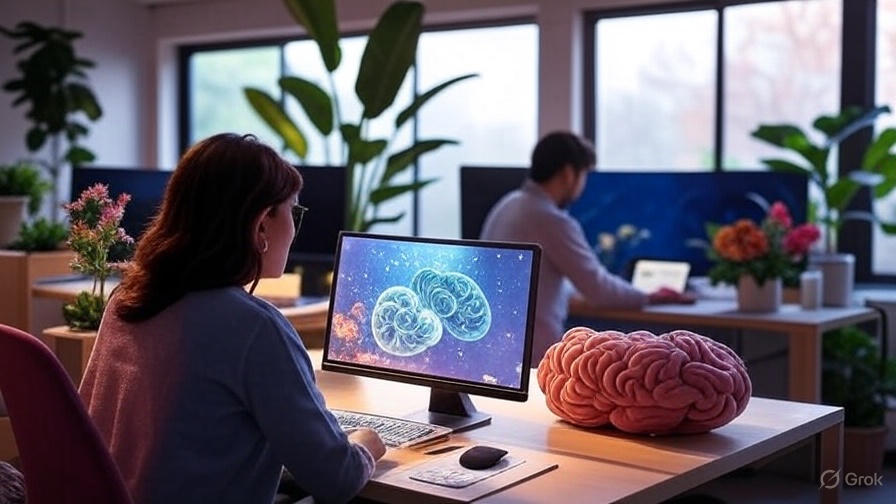Introduction
In 2025, a fascinating trend is reshaping how we interact with our environments: neuroaesthetics. This emerging field blends neuroscience, psychology, and design to create spaces that not only please the eye but also optimize brain function, enhance well-being, and boost creativity. As our understanding of the brain deepens, architects, interior designers, and urban planners are leveraging neuroaesthetics to craft environments that resonate with our cognitive and emotional needs. This article explores the rise of neuroaesthetics, its principles, applications, and why it’s a top trend for 2025.
What is Neuroaesthetics?
Neuroaesthetics is the study of how aesthetic experiences—such as art, architecture, or nature—influence the brain and body. It examines how visual stimuli, spatial arrangements, and sensory elements trigger neural responses that affect mood, focus, and even physical health. Rooted in neuroscience, this field uses tools like brain imaging to understand how design elements, such as color, light, or symmetry, impact our emotions and cognition.
The term gained traction in the early 2000s, pioneered by researchers like Semir Zeki, a neuroscientist who explored how art activates the brain’s reward systems. In 2025, neuroaesthetics is moving beyond galleries and into everyday spaces—homes, offices, schools, and public areas—driven by a growing demand for environments that support mental health and productivity in an increasingly stressful world.

Why Neuroaesthetics is Trending in 2025
Several factors are propelling neuroaesthetics into the spotlight. First, the global focus on mental health has intensified, with 73% of consumers prioritizing wellness in their lifestyle choices, according to a 2025 Nielsen report. People are seeking spaces that reduce stress and foster calm, especially as remote work and urban living continue to dominate.
Second, advancements in technology, such as AI-driven design tools and brain-computer interfaces, allow designers to test how spaces affect neural activity in real time. For instance, AI platforms like QuickCreator analyze user behavior to tailor environments that align with cognitive preferences, boosting engagement and comfort.
Third, the rise of biophilic design—integrating natural elements like plants or water features into spaces—complements neuroaesthetics by tapping into our innate connection to nature. Studies show that exposure to natural light and greenery can lower cortisol levels by up to 15%, enhancing mood and focus.
Core Principles of Neuroaesthetic Design
Neuroaesthetic design is guided by principles that align with how our brains process environments. Here are some key concepts shaping this trend:
- Sensory Balance: Our brains crave a balance between stimulation and calm. Overly cluttered spaces can overwhelm the prefrontal cortex, leading to decision fatigue, while minimalist designs with soft textures and neutral tones promote relaxation. In 2025, designers are using “dopamine decor”—vibrant yet balanced elements—to create uplifting yet non-overwhelming spaces.
- Symmetry and Patterns: The brain is wired to find symmetry pleasing, as it signals order and safety. Neuroaesthetic designs often incorporate subtle patterns or fractal geometry, mimicking natural forms like tree branches or waves, which studies show can reduce stress by 60% compared to chaotic layouts.
- Color Psychology: Colors profoundly affect mood. For example, blues and greens activate the parasympathetic nervous system, promoting calm, while reds can increase alertness. In 2025, designers are using dynamic lighting systems that adjust hues based on the time of day or task, optimizing cognitive performance.
- Biophilic Elements: Incorporating nature into design, such as indoor gardens or natural materials, taps into our evolutionary preference for green spaces. A 2024 study from the University of Oregon found that biophilic environments improve memory retention by 20%.
- Spatial Flow: Open, fluid layouts with clear sightlines reduce anxiety by giving the brain a sense of control. Curved furniture and rounded corners are gaining popularity, as sharp edges can subconsciously trigger threat responses.
Applications of Neuroaesthetics in 2025
Neuroaesthetics is transforming various sectors, from residential design to public infrastructure. Here’s how it’s being applied:
1. Workspaces
With 70% of employees working remotely at least part-time, per Global Workplace Analytics, offices are being reimagined as hubs for collaboration and creativity. Neuroaesthetic principles are used to design “brain-friendly” workspaces with natural light, ergonomic furniture, and quiet zones to reduce cognitive overload. Companies like Google and Microsoft are experimenting with AI-driven lighting that adjusts to employees’ circadian rhythms, boosting productivity by up to 12%.
2. Homes
The home is becoming a sanctuary for mental health. In 2025, “dopamine decor” is trending, with vibrant accent walls, textured fabrics, and indoor plants creating uplifting environments. Smart home systems integrate neuroaesthetic principles by adjusting lighting and sound to match occupants’ moods, using data from wearable devices.
3. Education
Schools are adopting neuroaesthetic designs to enhance learning. Classrooms with natural light, flexible seating, and calming colors improve student focus and retention. A 2025 pilot program in Finland found that neuroaesthetic classrooms increased student engagement by 25% compared to traditional setups.
4. Public Spaces
Urban planners are using neuroaesthetics to make cities more livable. Parks with fractal-patterned pathways, public art installations, and sensory gardens are designed to reduce urban stress. Cities like Singapore are leading the way, with green rooftops and biophilic architecture becoming standard.
Challenges and Considerations
Despite its promise, neuroaesthetics faces challenges. Designing for diverse neural responses is complex, as cultural and individual differences affect how people perceive spaces. For example, while symmetry is universally appealing, color preferences vary widely across cultures. Designers must use data-driven tools to balance universal principles with personalized touches.
Cost is another hurdle. Implementing neuroaesthetic features like smart lighting or biophilic elements can be expensive, potentially limiting access to high-budget projects. However, open-source AI design tools are democratizing access, allowing smaller firms to adopt these principles.
Ethical concerns also arise. Over-reliance on AI to manipulate neural responses raises questions about privacy and autonomy. Designers must ensure transparency in how data is used to shape environments.

The Future of Neuroaesthetics
Looking ahead, neuroaesthetics is poised to grow as technology and neuroscience advance. By 2026, experts predict that brain-computer interfaces will allow real-time feedback on how spaces affect users, enabling hyper-personalized designs. Virtual reality is also being used to simulate neuroaesthetic environments, letting designers test layouts before construction.
Sustainability will play a bigger role, with neuroaesthetic designs incorporating eco-friendly materials to align with the 73% of consumers prioritizing sustainable practices. The integration of AI and neuroaesthetics will also expand into virtual spaces, with metaverse environments designed to optimize mental well-being.
Conclusion
Neuroaesthetics is more than a design trend—it’s a revolution in how we shape our environments to support the mind. By blending neuroscience with aesthetics, this field offers a blueprint for creating spaces that enhance well-being, creativity, and productivity. As 2025 unfolds, bloggers and creators have a unique opportunity to explore this cutting-edge topic, offering readers practical insights and inspiration. Whether you’re redesigning your home or crafting content, neuroaesthetics is a trend worth embracing for a healthier, happier future.
Sources: Nielsen Consumer Report 2025, University of Oregon 2024 Study, Global Workplace Analytics 2025


